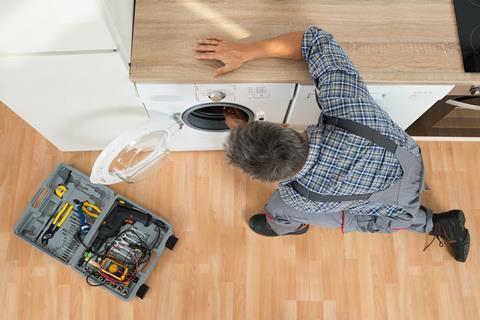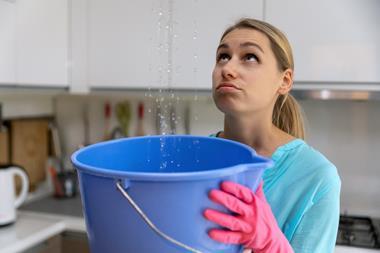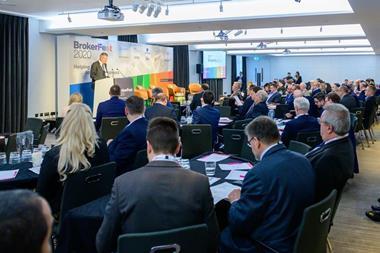Thinking outside of rigid claims processes can sometimes better suit clients says Davies Group
Customer education forms part of a three-pronged strategy to help insurers reduce escape of water (EOW) claims, Adam Shaw, director strategic accounts, claims solutions at Davies Group, explained to delegates at Insurance Times’ BrokerFest 2020 event on Tuesday.
This education could include, for example, increasing awareness of preventative technology, such as water leak detection devices, improving maintenance of vulnerable areas, checking that pipework is insulated, especially in customers’ roofs, informing customers about how temperature control can impact pipework and reminding clients to replace old appliances.
Alongside arming customers with this information, Shaw said that preventative technology as well as claims management and technology form the other pieces of the puzzle when it comes to cutting EOW claims costs.
In terms of preventative technology, Shaw cited leak detection systems, automatic shut-off valves and household telematics, such as remote heating controls and automated notifications, as useful aids. But, Shaw observed that customers do not seem to be interested in these types of technology devices, therefore uptake is low and the technology is not being used to its full extent.
“Household telematics empower the consumer, if they are going away, if they have a second property and they’re notified. Household telematics are really clever things,” he said.
“Hive technology will notify not only the consumer, but the insurer or potentially the broker, or the claims unit and that will give us speed of access to the property. If there’s an issue, we can get out there and take mitigating action straight away. Some of this technology is really, really good, but uptake is really, really low.”
Shaw estimated that it could take up to 10 years for preventative technology to make a real difference to the market.
Thinking differently
Looking closer at the claims management process, Shaw broke this down into cost containment and customer satisfaction.
In order to keep customers happy, speed of response is important – this can involve automated responses or video technology to enable remote site visits.
Shaw further recommended that brokers and insurers think differently when handling EOW claims, so that solutions can be better tailored to customers. For example, many policyholders do not want to leave their homes for alternative accommodation due to the upheaval this can cause.
While alternative accommodation is most likely the better option for a young family, Shaw explained that a working professional, who is out during the day, may prefer to receive a disturbance allowance. That way, they can remain at their property to sleep but also have a budget to eat their meals out if they are unable to use their kitchen.
Training claims staff to ensure a smooth customer journey is also essential – Shaw added that virtual reality training, where claims employees can virtually walk around a property, is useful.
Using the knowledge of front-line claims staff can also help, as they will often be able to pinpoint gaps in policy wordings and will have access to relevant data.
“We’ve got standard metrics that we follow in the claims arena; it’s really just in and out, the claims come through, we’re measured on the same things day in, day out and although we have some innovation, it doesn’t stand out if I’m being brutally honest. It does not stand out,” Shaw said.
Hosted by comedian and actor Tom Allen, 34 Gold, 23 Silver and 22 Bronze awards were handed out across an amazing 34 categories recognising brilliance and innovation right across the breadth of UK general insurance.




















































No comments yet